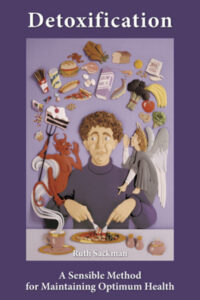
Are you one of those people who looks for the guy in the produce department to tell you whether the pineapple or melon you”ve picked out is at the peak of ripeness? Are you a little in awe of those humans who, with a surgeon”s precision — a little pinch here or sniff there — can know if an item has reached its prime? Do you believe that some individuals are simply born with this special “ripeness sensibility” and that you are destined to look to them to verify your produce choices?
If these kinds of thoughts run “round your head, rest assured, you are not alone. However, enlightenment is in sight. Anyone can learn how to judge ripeness. You just have to take the time to get to know what you”re looking for. Sometimes it”s about color, other times, touch or smell. Here are some tips to help you become a fruit ripeness expert (note: a fruit is a seed-bearing structure that develops from the flower of the plant; vegetables are all other parts, like roots, leaves, stems):
- Pineapple. Look for golden brown, without much green at the base. A sweet scent indicates ripeness; no scent means it”s not yet ripe. But if it has a slight vinegary smell, it”s overripe and best avoided.
- Peaches. Ripe peaches turn a reddish and yellowish color. The part of the peach that was in direct contact with the sun becomes red; the part facing away (or closer to the ground) turns yellow. You want to be sure there”s not green tint around the stem. When perfectly ripe, a peach will give slightly to touch and smelly peachy, just like the taste.
- Eggplant. Every part of this fruit gives clues to its ripeness. If the stem and cap are bright green, the eggplant is fresh. But if it”s beginning to turn yellow or brown, it”s past prime. The skin should be deep and dark in color and free of scars or blemishes. When you hold the eggplant in the palm of your hand and gently squeeze it with your fingertips, the skin should be tight and elastic. If indentations remain from your fingertips, it”s either not ready yet or perhaps it”s been sitting around too long.
- Watermelon. A ripe watermelon is heavy, indicating that it”s full of water. To check for ripeness, tap on the melon. If it sounds hollow, it”s ripe. You can also check the underside of the melon. If it has a yellow or light spot on the bottom, it”s eating ready. If the stripes of the melon are found all around the melon, it needs more time to ripen.
- Cantaloupes. A ripe melon feels heavy and smells subtly sweet. If it smells very sweet it”s probably overripe. The best test of ripeness is to slightly push at the stem end; if it gives a bit, then it”s ready to eat.
- Mango. There are many types of mango, so color is not a good indicator of ripeness. The only way to know if it”s ready to eat is by touch. It should give slightly when touched, if it”s ripe. Sometimes the mango will give off a fruity aroma at the stem end when ripe. If it”s mushy or uneven to the touch, it”s not a good choice.
- Corn. The husk is the key. If the husk is green and hasn”t dried out, the ear of corn is still ripe and juicy. The silk threads are also good indicators. They should cling to the kernels and the kernals should be plump.
- Strawberries. The scent is everything. They should smell exactly like you want them to taste. If there”s little if any discernible smell, they”re probably not going to taste like much. (It”s very hard to find really ripe commercial strawberries because they”re picked so early, way before they”re allowed to ripen on the vine; wild strawberries are the most flavorful, if you”re lucky enough to find them.) The berries should also be bright red and free of blemishes.
- Honeydew melon. Unlike cantaloupe, you can determine ripeness of honeydew by the appearance of its skin. It should be waxy and smooth with a golden — not yellow — color.
- Oranges. The skin should look bright and firm. If it looks pale, it”s unripe. If it the skin looks leathery, it”s overripe.
- Tomato. Touch is a better indicator here than color. After all, tomatoes come in many shades: red, orange, yellow, green and purple. The touch test is the best indicator. If it yields slightly to the touch, it”s at optimal ripeness. Any more than that means it”s past ripe and lacking in flavor. If there”s no give at all, the tomato needs a few more days to ripen.
- Avocados. Color is not a good ripeness indicator as different avocado varieties do not look the same when ripe. Hass, for instance, turns dark purple, while others remain light green. To test, hold the avocado in the palm of your hand, not your fingers. It should give slightly to the touch if ripe. Don”t use fingers — you may bruise the fruit.
- Plums. Don”t judge a plum by its color. Some varieties are deep purple whether just starting to grow or ripe. Touch determines quality. You want a slightly soft and smooth skin. Avoid any that are wrinkled, hard or mushy.
- Coconuts. Press your thumb against the three “eyes.” Compared to the hard shell, they should feel slightly soft and dry in a mature fruit. When you gently shake it, you should also be able to hear liquid sloshing around inside.
Sources:
Video: “How to tell when fruit is ripe” — Whole Foods Market
“Tell If It”s Ripe or Not” by Yumi Sakugawa
“Is it Ripe?” by Tessa Miller
“12 Tricks for Buying the Ripest Summer Produce” by Julie R. Thomson”
Video: “How to Tell If Eggplant is Ripe”




